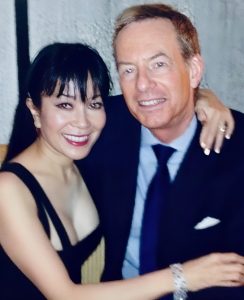Artistic Ventures: A Deep Dive into the Financial Aspects of Collecting Art


The world of art has always been a realm of profound creativity and emotional expression. However, beyond its aesthetic pleasure, art has also emerged as a significant player in the financial landscape. Artistic ventures, mainly collecting art, have evolved into a complex and lucrative domain where passion meets investment strategy. In this exploration, we delve into the financial aspects of collecting art, shedding light on the intricate interplay between the art market, investment, and the ever-changing value of creativity.
The Investment Landscape
Art has become a viable investment option, often considered a tangible form of cultural and emotional value. The art market, fueled by seasoned collectors and new enthusiasts, has witnessed a surge in transactions and prices. The allure of potential financial gains has turned art collecting into a strategic investment endeavor.
One of the primary drivers of Collecting art as an investment is its ability to diversify a portfolio. Unlike traditional assets such as stocks and bonds, art operates in a unique realm where values are subjective and influenced by trends, cultural shifts, and individual tastes. This lack of direct correlation with traditional financial markets makes art an attractive addition for investors seeking to spread risk and enhance the resilience of their portfolios.
Understanding the Art Market
The art market, though captivating, is notoriously opaque and can be challenging to navigate. Prices are often determined by many factors, including an artist’s reputation, the historical significance of a piece, and the prevailing trends in the art world. Auction houses, galleries, and private sales all contribute to the dynamic ecosystem of buying and selling art.
Notably, the art market is not immune to economic downturns. During financial instability, art values may experience fluctuations, making it essential for collectors to be mindful of the broader economic landscape. Conversely, periods of economic prosperity can drive art prices to new heights as disposable income for luxury goods increases.
The Role of Passion and Research
While financial gains are a tempting aspect of art collecting, it is crucial to recognize the emotional and aesthetic dimensions that draw individuals to art. Passionate collectors often find that their investments bring them immense personal satisfaction and a sense of connection to the broader cultural narrative.
Informed collecting requires a delicate balance between passion and research. Successful collectors immerse themselves in the art world, keeping abreast of emerging artists, attending exhibitions, and staying informed about market trends. Research becomes a tool for understanding the potential financial returns and appreciating the nuanced stories each piece of art tells.
Risk Management in Art Investments
Risk management is critical in art collecting, as with any investment. The value of art is subjective and can be influenced by factors that are often unpredictable. Economic downturns, shifts in artistic trends, and changes in public perception can impact the value of a collection.
Diversification is a fundamental strategy in mitigating risks associated with art investments. Collectors are advised to diversify across different artists, styles, and periods to create a resilient and balanced portfolio. Additionally, insurance plays a critical role in protecting valuable collections from unforeseen events such as theft, damage, or natural disasters.
The Rise of Art as an Asset Class
There has been a growing recognition of art as a distinct asset class in recent years. Investors and collectors are increasingly acknowledging the value of art in diversified portfolios. This recognition has spurred the creation of art investment funds. Art and finance experts manage these funds, enabling individuals to invest in a diverse art portfolio without direct ownership responsibilities. They offer a more accessible entry for those interested in the financial aspects of art without being hands-on collectors.
As art gains recognition as a legitimate asset class, collectors navigate a realm where creativity and investment converge. In this delicate dance, art serves as a canvas weaving financial and emotional values, reflecting the evolving landscape of artistic ventures.
